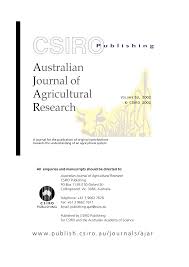Ver ítem
- xmlui.general.dspace_homeCentros e Institutos de InvestigaciónCIAP. Centro de Investigaciones AgropecuariasInstituto de Fisiología y Recursos Genéticos VegetalesArtículos científicosxmlui.ArtifactBrowser.ItemViewer.trail
- Inicio
- Centros e Institutos de Investigación
- CIAP. Centro de Investigaciones Agropecuarias
- Instituto de Fisiología y Recursos Genéticos Vegetales
- Artículos científicos
- Ver ítem
Physiological causes for decreased productivity under high salinity in Boma, a tetraploid Chloris gayana cultivar
Resumen
Rhodes grass (Chloris gayana Kunth) is widely cultivated in the semi-arid tropics and favoured for salt tolerance; nevertheless, productivity decreases significantly under saline conditions, especially in tetraploid cultivars. The purpose of this work was to explore, in the tetraploid cultivar Boma, the physiological causes for such decrease. Experiments were carried out in vegetative plants in the greenhouse. At high salinity (200 mM NaCl), an early
[ver mas...]
Rhodes grass (Chloris gayana Kunth) is widely cultivated in the semi-arid tropics and favoured for salt tolerance; nevertheless, productivity decreases significantly under saline conditions, especially in tetraploid cultivars. The purpose of this work was to explore, in the tetraploid cultivar Boma, the physiological causes for such decrease. Experiments were carried out in vegetative plants in the greenhouse. At high salinity (200 mM NaCl), an early reduction in leaf area expansion was observed, and, later, decreased dry matter accumulation, suggesting that the central effect of salinity was a limitation of leaf growth. This was evaluated in 2 closely related Boma clones, exhibiting different degrees of salt tolerance. Growth, ion accumulation and excretion, sugars, and proline concentrations were measured under a range of salt concentrations (0–200 mM NaCl). Differences between the clones in leaf expansion were expressed only at high salinity, but were not associated with differences in water potential or hydraulic conductance in the expanding region. At all salinity levels, the proportion of dry leaves was higher in the clone which also had lower salt gland density and Na excretion rates. Less efficient Na extrusion, associated with high oxidative stress, may be the main cause for leaf senescence and differences in productivity between these clones.
[Cerrar]

Autor
De Luca, Marcos Javier;
García Seffino, L.;
Grunberg, Karina;
Salgado, M.;
Córdoba, Alicia R.;
Luna, Celina Mercedes;
Ortega, Leandro Ismael;
Rodriguez, Andrés Alberto;
Castagnaro, Ana P.;
Taleisnik, Edith;
Fuente
Australian Journal of Agricultural Research 52 (9) : 903–910 (2001)
Fecha
2001
Editorial
CSIRO Publishing
ISSN
0004-9409
Formato
pdf
Tipo de documento
artículo
Palabras Claves
Derechos de acceso
Restringido
 Excepto donde se diga explicitamente, este item se publica bajo la siguiente descripción: Creative Commons Attribution-NonCommercial-ShareAlike 2.5 Unported (CC BY-NC-SA 2.5)
Excepto donde se diga explicitamente, este item se publica bajo la siguiente descripción: Creative Commons Attribution-NonCommercial-ShareAlike 2.5 Unported (CC BY-NC-SA 2.5)

